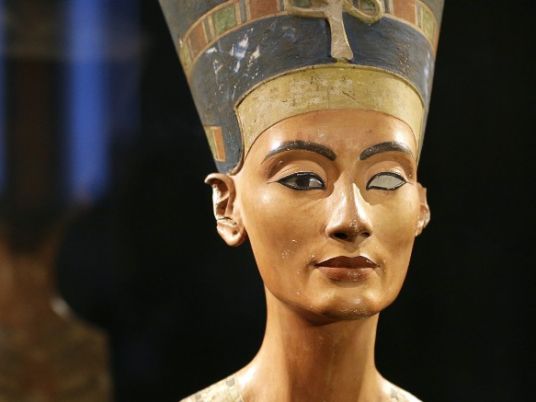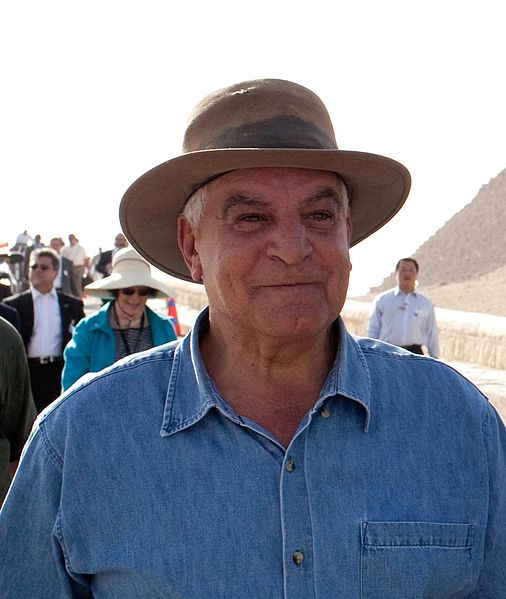
International newspapers several years ago reported the discovery of Queen Nefertiti’s mummy, citing an English researcher more interested in fame than science.
Naturally, I opposed the publication of such sensational, unverified news. At the time, I challenged every piece of alleged evidence the English researcher presented. During our debates, I lacked scientific data on the purported Nefertiti mummy.
However, after the English researcher examined this mummy using x-rays, I wasn’t able to refute its results.
The mummy that is claimed to be Queen Nefertiti, the wife of King Akhenaten, was first discovered in 1898 by French Egyptologist Victor Loret within a cache of mummies in Tomb #35 in the Valley of the Kings, which belonged to King Amenhotep II.
Years after the cache of mummies in Amenhotep II’s tomb was revealed, Howard Carter, renowned for discovering Tutankhamun’s tomb, relocated nine identified mummies – including those of Kings Thutmose IV, Amenhotep III, and Merneptah (son of the famous Ramesses II) – to Cairo.
The story behind these caches dates back to the 21st Dynasty. At the time, Amon’s priests sought to protect the royal mummies from widespread tomb robberies. To do so, they moved the mummies from their original burial sites to nearby tombs, and then to various hidden caches.
The most famous of these is undoubtedly the Deir el-Bahari cache, unearthed in 1881.
Carter left three mummies inside Amenhotep II’s tomb, the first of which he named the “Elder Lady.” Through the Royal Mummies Study Project, which I’ve led for years, we later confirmed that the Elder Lady’s mummy is indeed the famous Queen Tiye, wife of King Amenhotep III, known as the “Pasha of Ancient Egypt’s Pharaohs,” and the mother of King Akhenaten.
Next to Queen Tiye’s mummy lay another mummy of a young boy, whom I believe to be a son of King Amenhotep III who died young, leaving the throne to his brother Akhenaten.
The third mummy, the subject of this article, was initially believed by the French Egyptologist Loret to be that of a young boy with a bald head, a missing right arm, and a crushed area below the face.
This mummy, known as the “Younger Lady,” is the one that is widely proclaimed to be Queen Nefertiti, the wife of King Akhenaten. She lived alongside her husband during their struggles against the priests of Amun, moved with him to Amarna, and bore him six daughters, one of whom married the famous boy king Tutankhamun.
However, upon Queen Tiye’s (Nefertiti’s mother-in-law) arrival in Amarna, Nefertiti completely withdrew from public life, living separately from Akhenaten in her palace with her daughters.
Scientists have never found the tomb or the mummy of the beautiful queen, yet her fame endures through her exquisite bust displayed in the Berlin Museum.
The struggle between us and the museum regarding the return of the queen’s head to her homeland, Egypt, continues.
Under my leadership, we successfully established the first-of-its-kind Egyptian Project for the Study of Royal and Non-Royal Mummies. This ambitious project aims to create a comprehensive database and record of all mummies located in tombs and storage facilities.
Furthermore, it involves studying royal mummies using the latest CT-Scan technology and establishing the only DNA laboratory in the world specifically dedicated to mummy studies.
This lab was initially located in the basement of the Egyptian Museum before being transferred to the National Museum of Egyptian Civilization in Fustat.
We initially used the CT scanner to uncover the secrets of the controversial “Younger Lady” mummy, which had been popularized as Nefertiti’s.
However, our studies concluded that she had no connection to Queen Nefertiti.
One of the arguments proposed in favor of this being Nefertiti was the mummy’s right arm position. When the mummy was discovered, its right arm was missing, though two separate arms were found nearby: one straight and one bent.
While scientists initially believed the straight arm belonged to the mummy, a later study, using mummy measurements and x-ray analysis, revealed that the bone density of the straight arm differed from the rest of the body.
This led him to conclude that the bent arm was the correct one. If true, the woman would have one straight left arm extending along her body and a bent right arm across her chest.
This specific arm positioning, one straight and one bent, was a tradition reserved for queens.
However, this doesn’t confirm her identity as Nefertiti, as many other ancient Egyptian queen mummies have yet to be identified.
The next article will delve deeper into the true identity of the Younger Lady mummy, fully dispelling the long-held belief that she was Queen Nefertiti.




